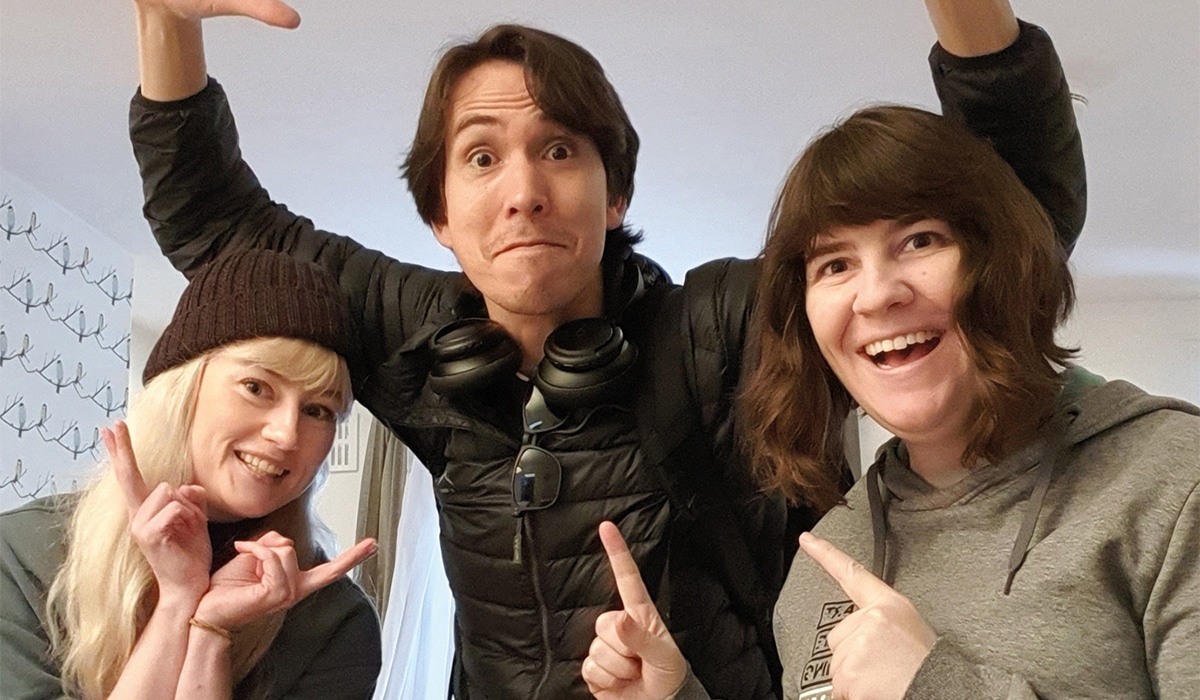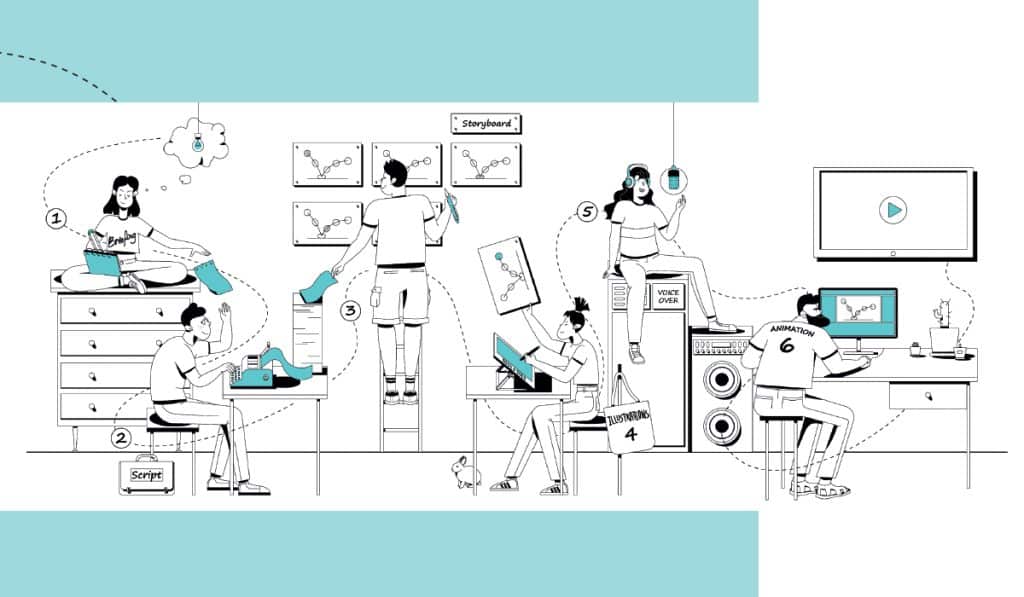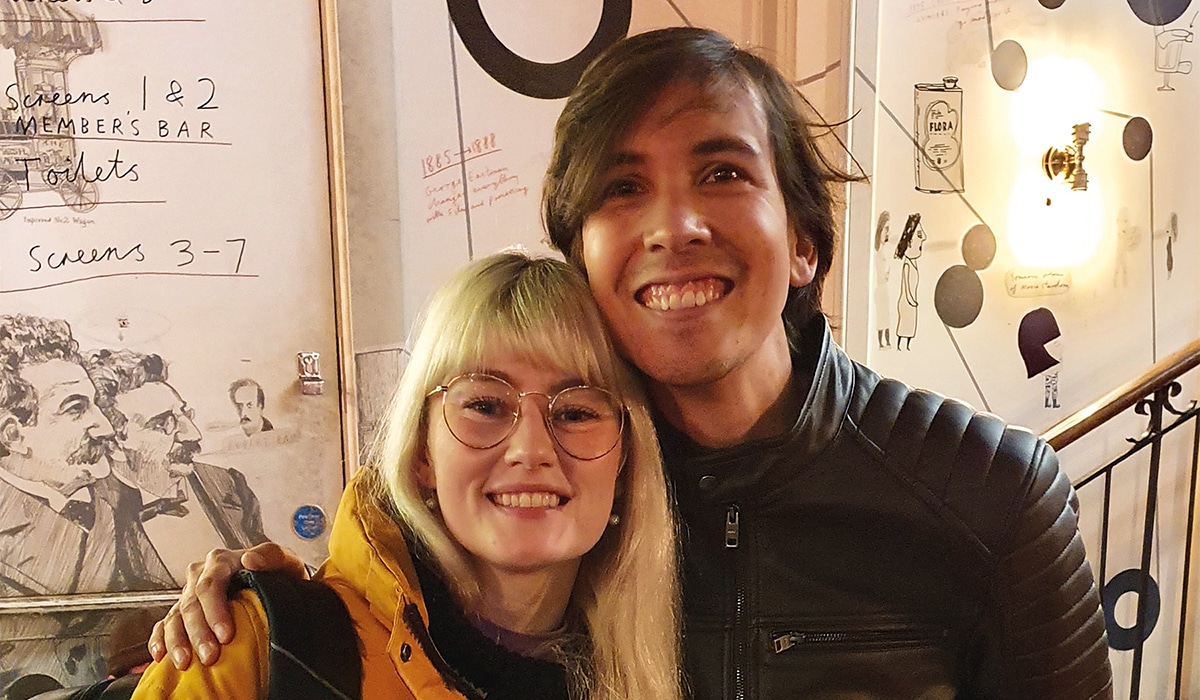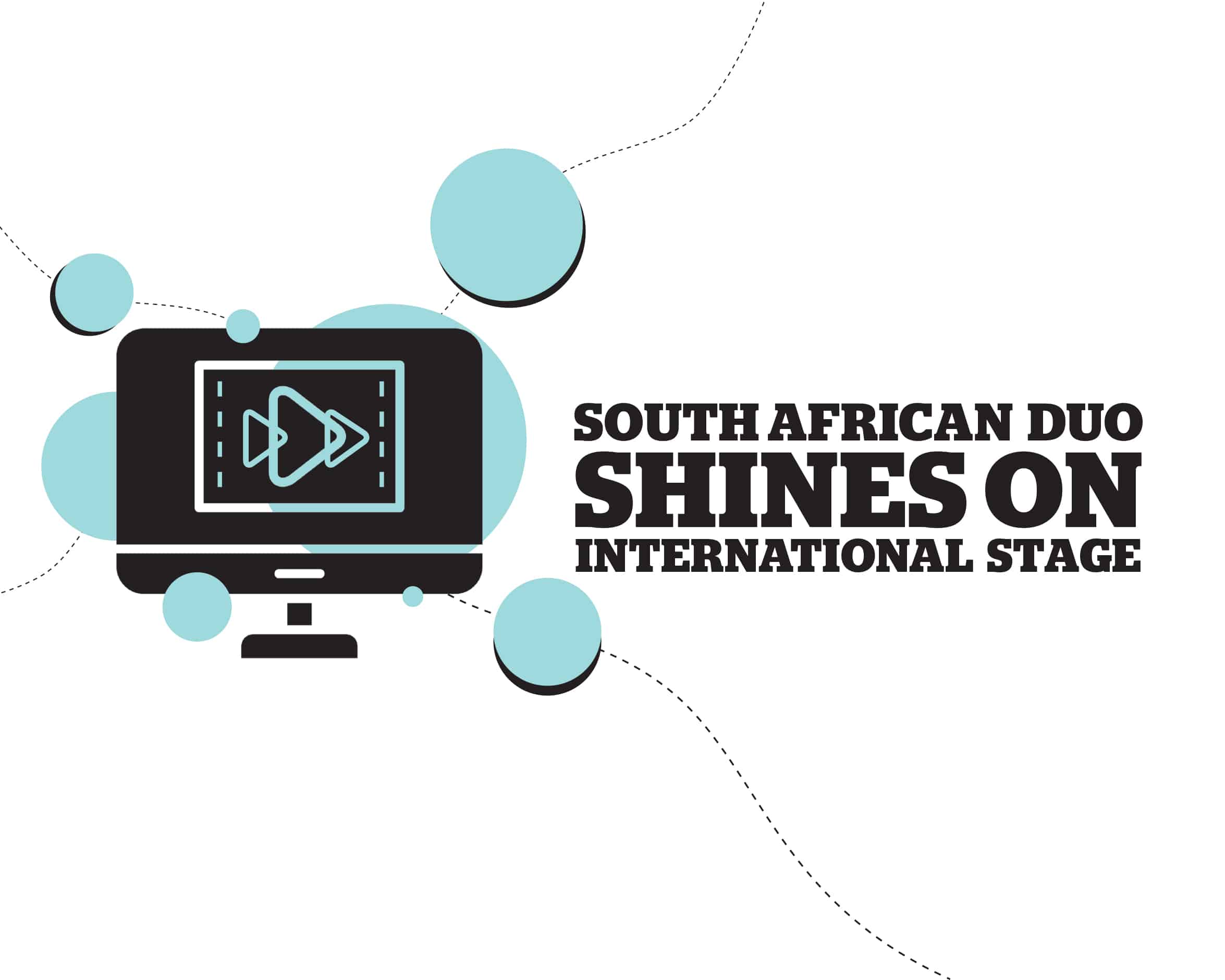The Smeds And The Smoos, an animated film by magic Light Pictures in the UK, won the 2023 International Emmy for Kids: Animation in November. The short film, which was based on the children’s book by Julia Donaldson, was co-directed by South African animators Daniel Snaddon and Samantha Cutler, who take us behind the scenes of the animation industry.
How did you become interested in the world of animation?
Sam: I wanted to become a professional ballet dancer; I went to art school for ballet. I was very focused on that so, when I finished high school, I went to a couple of auditions until I realised that being a ballet dancer is not really what I want to do for the rest of my life. A friend who was working in the media industry told me of an internship they had at their company so I started out as an intern but more on the journalist side. I then became curious and made friends with people who were [working on the animation side]. That is where I learnt a lot and got equipped with lots of skills and training and that is when I realised that this is what I want to do and I never looked back. I am grateful that things happened that way because I was able to save my parents a lot of college money.
Dan: I made my first animations in the corner of my Afrikaans woordeboek when I was in primary school and then progressed to make short films with clay and an old Sanyo video camera. When we got our first Windows PC, around 1996, I used my savings to buy a very cheap scanner and I would make simple animations using pencil on paper, scanning them into a program called Klik & Play, which you could use to make super simple games. When one of my best friends in high school told me he was going to study animation at Boston Media House, I got insanely jealous and realised I needed to follow him there. I completed a two-year diploma in 3D animation at Boston and followed it up with a bachelor’s degree that began at Wits and finished at The Queensland College Of Arts in Brisbane, Australia. My first job was at Bug Box Animation in Johannesburg where I worked as an animator and director on its in-house project The Adventures Of Toby. I moved to Triggerfish in 2012 to work as a story artist and animator on Khumba and got the opportunity to co-direct Stick-Man for Magic Light Pictures after that.

What are some common problems animators face when working on a project? How do you continue to challenge yourself and grow in the industry?
Sam: Lack of creativity, including adhering to the creative direction set by the creative director. A few animators, including myself, sometimes get lost; you want your shot to be the most beautiful thing ever and sort of lose track of the entire film. It is then up to the director to nudge you back. Another scenario could be animators who work for an animation client that may have visions that may not align with the artistic preference of an animator. Also, the demands of the job can require you to do your job in very tight time frames, which then can lead to long hours in front of a computer. Mental and physical burnout can create problems if you do not have strategies to take care of yourself. You need to make sure to take breaks rather than giving into the desire to work straight for hours on end. I think having a work–life balance has helped me a lot. I need to make sure I take vacation days. I try, by all means, to avoid working weekends and have outside hobbies beyond artistic talent. Last, communicating where you are in a project can be very beneficial. Having a concise idea of where a project is and what needs to be done will allow you to set mini deadlines throughout the process and can help a lot over the course of the project.
What is your opinion on 3D-animated movies and series? Are they better than 2D animation?
Sam: Some of my favourite films are 2D – they are my absolute favourite! So 2D animation uses hand-drawn images with or without the help of a computer, which then creates characters that have height and width. 3D animation, on the other hand, uses computer-generated characters that have height, width, and more depth, which gives them a more realistic and three-dimensional appearance. 3D movies add depth and make you feel like you are part of the experience.
How do you handle creative differences and what are some techniques you use to ensure that a film is cohesive – that it flows throughout the story?
Sam: The most important thing I am an advocate of is clear communication: Communicate clearly and respectfully with each other. It is important to voice your concerns or questions in a respectful manner, expressing your ideas and opinions without being dismissive. Fortunately for me I have been working with Dan for some time now and we both have an understanding that we do things differently but with a common goal – to make a successful and quality film. I will try not to be too technical but, in simple summary, in order to ensure that a film flows throughout [you need] to choose a story arc. A story arc is the way the plot and the characters develop and change over the course of the film, and it usually follows a pattern of exposition, rising action, climax, falling action, and resolution, and so on. It also depends on the genre, tone, and message of your film. You can choose a story arc that suits your vision and goals: for example, you can opt for a linear story arc that follows a chronological order, a non-linear story arc that uses flashbacks, flash forwards, or parallel timelines, or a circular story arc that ends where it began.

Animation-and-film-production process
Pre-production
Brainstorming
Scripting
Concept art
Storyboarding
Pre-visuals
Production
Layout
Modelling and texturing
Lighting
Animation
Rendering
Voice overs
Post-production
Compositing
Sound editing
Video editing
How has technology changed the film/animation industry in recent years? In what ways have you adapted new methods in the production process?
Dan: Technology has made the process a lot easier. Especially for those who are starting out in the industry, things are now more simplified. There is an increased production efficiency – an example being the enhancement of visual effects. Audio technology in film-making has also witnessed huge advancements and there have been improvements in editing tools.
How did that work out? How did the team collaborate?
Dan: We started the film mid 2021 in lockdown level 2 and the majority ofthe team members were in England. We could not fly out and meet the team so we had to do everything remotely and I have to mention our animation director, Anna Kapina. She was good at creating a sense of community, making regular coffee check-ins with the team in the morning and trying to get us to talk about things other than just the project. However, it is very normal in the industry now to collaborate online. It also allows companies to access talent around the globe. The real down side, though, is that when you are directing a project and you are working with ±70 people it is very difficult to feel that you are connected to all of them.
What were some of the unique animation or film techniques used in this movie?
Sam: Characters were sculpted in real life using clay.
Were you watching the Emmys? How did you feel when you heard that The Smeds And The Smoos had won?
Sam: No, I was not watching the ceremony. I was too anxious. I couldn’t even sleep. I was up all night. On the actual day, I was hiking up a mountain in Japan. I got a call from Dan and he shared the news. I was so overwhelmed and overjoyed I just started crying.
Dan: I was happy because all the hard work paid off. I have directed a couple of different films and they all have had [some form] of success. Winning the award has given a lot of confidence to the crew.

What was the most surprising reaction or feedback received from the audience – kids?
Sam: Surprisingly enough everyone is obsessed with the little green dog that is featured in the film. We also received positive feedback on social media.
Please complete the sentence “The most rewarding part of being an animator is…”
Sam: …to breathe life into your ideas for others to enjoy.
Dan: …creative freedom and versatility.
What advice would you give young filmmakers about finding and nurturing their talent?
Sam: If you are passionate about something you should really go for it. There is so much information out there these days. Do not be afraid to reach out to those who are in the industry and seek advice [from them].
Dan: Push yourself and do not give up. It won’t be easy at all but giving up is never an option. There is a lot happening this year – lots of projects all around the globe. It is exciting! Watch this space!
By: Vuyolwethu Dyasi
Photography: Supplied; Yansmedia







